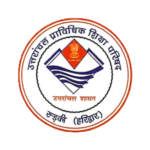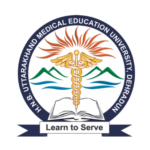Complementary and Alternative Medicine (CAM)
Complementary and alternative medicine (CAM) includes diverse practices like massage, acupuncture, tai chi, and drinking green tea. CAM encompasses medical products and practices that are not typically part of standard medical care. Cancer patients often use CAM to manage treatment side effects such as nausea, pain, and fatigue, to find comfort and reduce stress, to feel proactive in their care, or to attempt to treat or cure their cancer.
Integrative Medicine
Integrative medicine merges conventional medical treatments and pharmacy practices with CAM, that have been scientifically validated for safety and effectiveness. This approach prioritizes the patient’s preferences and addresses mental, physical, and spiritual health aspects.
Conventional Medicine
Conventional medicine involves healthcare professionals, including medical doctors (M.D.), who treat symptoms and diseases using drugs, radiation, or surgery. Other health professionals, such as nurses, pharmacists, physician assistants, and therapists, also do the pharmacy practice with conventional medicine. This practice may also be known as allopathic, biomedicine, Western, mainstream, or orthodox medicine. Some conventional medical practitioners also incorporate CAM into their treatments.
Standard Medical Care
Standard medical care refers to treatments widely accepted and used by healthcare professionals as appropriate for specific diseases. This is also called best practice, standard of care, or standard therapy.

Complementary Medicine vs. Alternative Medicine
Complementary medicine is used alongside standard treatments but is not considered standard on its own, such as using acupuncture to lessen the side effects of cancer treatment. Pharmacy practice like alternative medicine replaces standard treatments, like using a special diet instead of prescribed cancer drugs. Less research exists for most types of complementary medicine and alternative medicine.
Exploring CAM
While scientists continue to learn about CAM therapies, more research on Pharmacy practice is needed. If you have cancer, discuss CAM with your healthcare provider before using any therapies listed below. CAM is “natural,” “holistic,” “domestic remedy,” or “Eastern Medicine.” Experts categorize CAM into five main types:
- Mind-Body Therapies: These practices combine mental focus, breathing, and body movements to relax both the mind and body. Examples include:
- Meditation: Focused breathing or repetition of words or phrases to calm the mind and reduce stress.
- Biofeedback: Using machines to help patients control body functions like heart rate and blood pressure.
- Hypnosis: A trance-like state that increases focus on certain feelings, thoughts, images, sensations, or behaviors, aiding in healing.
- Yoga: Balancing the mind and body through stretches, poses, meditation, and controlled breathing.
- Tai Chi: Gentle exercises and meditation using slow body movements and controlled breathing.
- Imagery: Focusing on positive mental images to aid in healing.
- Creative Outlets: Activities like art, music, or dance.
- Biologically Based Practices: These use natural substances, such as:
- Vitamins: Essential nutrients the body needs in small amounts.
- Dietary Supplements: Products added to the diet, including vitamins, minerals, and herbs.
- Botanicals: Plants or plant parts, including herbs and spices like turmeric or cinnamon.
- Manipulative and Body-Based Practices: These involve physical manipulation of the body, including:
- Massage Therapy: Kneading, rubbing, tapping, and stroking the body’s soft tissues.
- Chiropractic Therapy: Manipulating the spine, joints, and skeletal system.
- Reflexology: Applying pressure to specific points on the feet or hands believed to correspond to certain body parts.
- Energy Healing: This is based on balancing the body’s vital energy flow, including:
- Reiki: Lightly placing hands on or above the person to guide energy and aid healing.
- Therapeutic Touch: Moving hands over the body’s energy fields or gently touching the body.
- Whole Medical Systems: These traditional healing systems have evolved over time, including:
- Ayurvedic Medicine: An Indian system aiming to cleanse the body and restore balance through diet, herbal medicines, exercise, meditation, breathing, and physical therapy.
- Traditional Chinese Medicine: Based on balancing qi (vital energy) along meridians (channels) in the body, including practices like acupuncture.
- Naturopathic Medicine: Avoiding drugs and surgery, using natural agents like air, water, light, heat, and massage, along with herbal products, nutrition, acupuncture, and aromatherapy.
For specific CAM therapies, the NCI provides evidence-based information for both patients and health professionals. The National Center for Complementary and Integrative Health (NCCIH) also offers detailed information and current research on CAM.
Safety of CAM
Certain CAM therapies, like acupuncture, yoga, and meditation, are generally safe and effective after thorough evaluation. However, other CAM therapies may not work, could be harmful, or might interact negatively with medications. It’s important to remember that “natural” does not always mean “safe.” Herbal and dietary supplements are not FDA-approved before being sold and can be harmful when taken alone, with other substances, or in large doses. For instance, kava kava has been linked to liver damage, and St. John’s Wort can reduce the effectiveness of cancer treatments. Always inform your doctor about any dietary supplements you are taking, even vitamins, as they can interact with your medications.
Diet and Cancer
No single food or special diet has been proven to control cancer. Individual nutritional needs vary, so it’s important to discuss your diet with your treatment team. Maintaining a well-rounded diet is crucial, especially during cancer treatment. There are no studies proving that any specific diet, food, supplement, herb, or combination can slow, cure, or prevent cancer recurrence. Some products may even interfere with cancer treatments.
Consulting Your Doctor
Cancer patients should discuss CAM use with their doctors to avoid potential harm or interference with treatment. Verify the efficacy and safety of any CAM therapy. Consider asking about complementary medicine and alternative medicine therapies that might help reduce stress and anxiety, alleviate fatigue, manage symptoms and side effects like pain or nausea, and improve sleep.
Choosing a CAM Practitioner
Selecting a CAM practitioner requires the same diligence as choosing a doctor. Seek recommendations from your cancer center’s staff. Questions to ask a complementary medicine and alternative medicine practitioner include their training, qualifications, experience with your type of cancer, and willingness to coordinate with your doctor. Inquire about the therapy’s benefits, risks, side effects, duration, cost, and insurance coverage.
Clinical Trials
The NCI and NCCIH sponsor clinical trials to test CAM treatments, studying complementary approaches alongside conventional treatments or comparing alternative therapies with standard care. A list of cancer CAM clinical trials is available.

Resources
Patients and healthcare providers can learn about CAM therapies and practitioners from agencies such as the National Center for Complementary and Integrative Health, the NCI Office of Cancer Complementary and Alternative Medicine, and the NIH Office of Dietary Supplements. Dr. Jeffrey D. White, OCCAM Director, explains the use of CAM in cancer.
Conclusion
Integrating complementary and alternative medicine (CAM) into cancer care provides a comprehensive approach that considers physical, mental, and spiritual health. Practices such as acupuncture, yoga, and meditation have been proven to be generally safe and effective, but it’s essential to use these therapies under the guidance of healthcare professionals to avoid potential risks and ensure they do not conflict with standard treatments. Always discuss any CAM therapies with your doctor to make informed decisions. Combining conventional medicine with validated CAM Pharmacy practice can enhance overall well-being and improve the quality of life for cancer patients. Stay informed, communicate openly with your healthcare team, and make thoughtful choices to achieve the best possible care.
FAQs
Q.1 What is Complementary and Alternative Medicine (CAM)?
- Complementary and Alternative Medicine (CAM) refers to medical practices and products that are not typically included in standard medical care, such as massage, acupuncture, tai chi, and herbal supplements.
Q.2 How does CAM differ from conventional medicine?
- Conventional medicine involves treatments like drugs, surgery, and radiation administered by healthcare professionals. Complementary and Alternative Medicine (CAM) encompasses non-standard practices and products that often focus on natural and holistic methods.
Q.3 What is integrative medicine?
- Integrative medicine blends conventional treatments with CAM practices that have been proven to be safe and effective, addressing physical, mental, and spiritual health while considering patient preferences.
Q.4 Can CAM assist with cancer treatment?
- Many cancer patients use complementary medicine and alternative medicine (CAM) to manage treatment side effects, reduce stress, feel proactive in their care, or attempt to treat their cancer. Always consult with your healthcare provider before starting any CAM therapy.
Q.5 Are CAM therapies safe?
- Some Complementary and Alternative Medicine (CAM) therapies, such as acupuncture, yoga, and meditation, are generally safe. However, others may not work, could be harmful, or might interact negatively with conventional treatments. Always discuss complementary medicine and alternative medicine use with your doctor.








